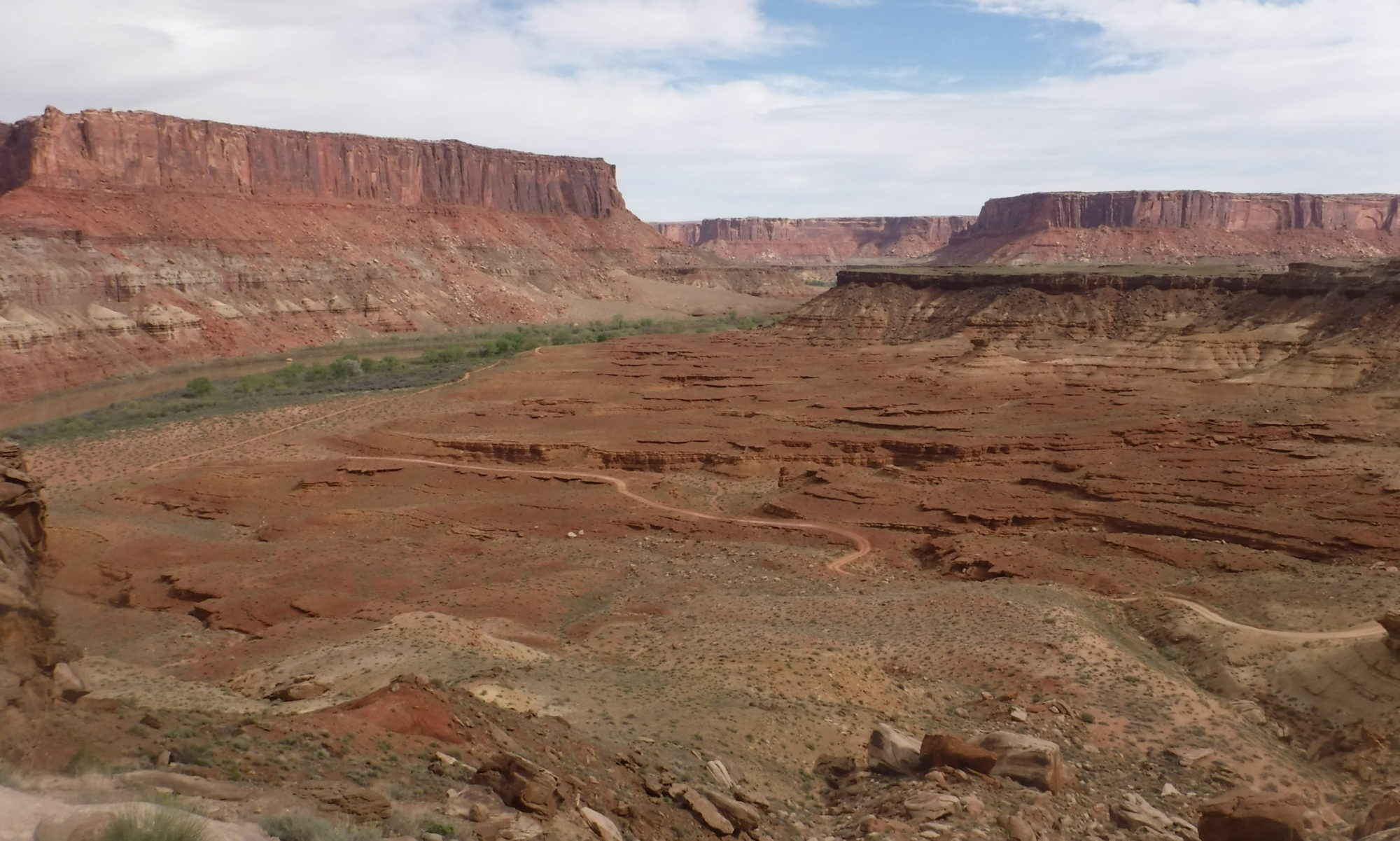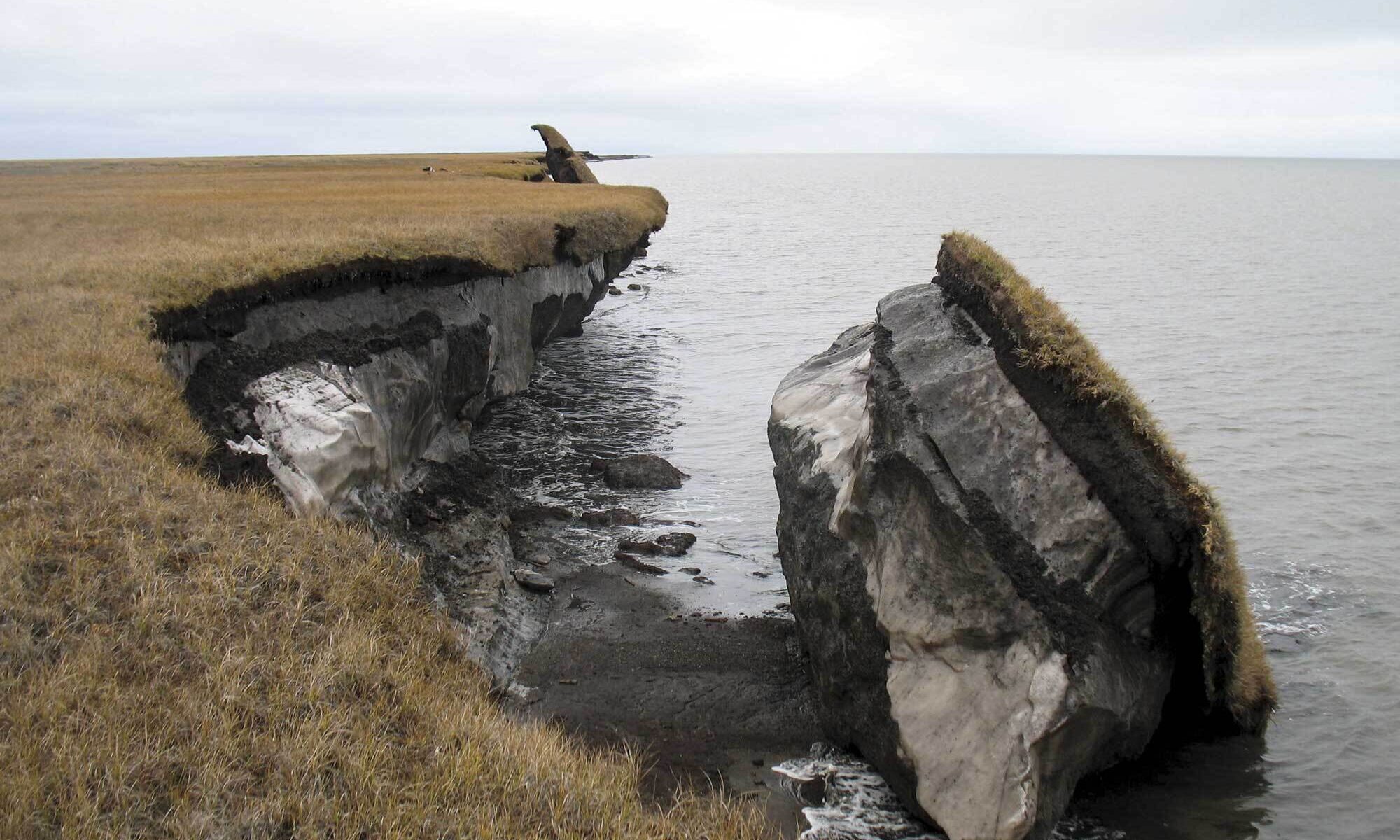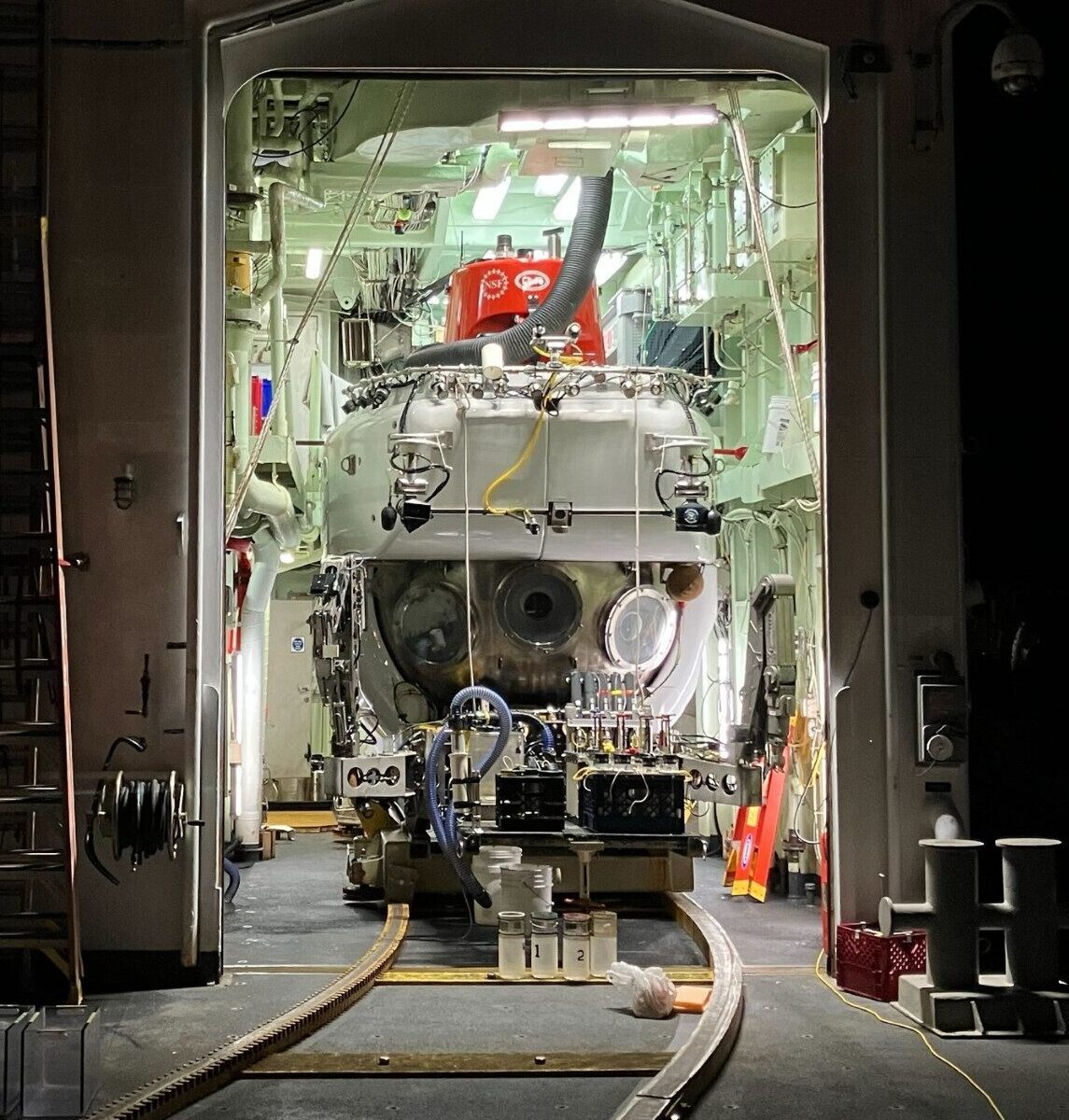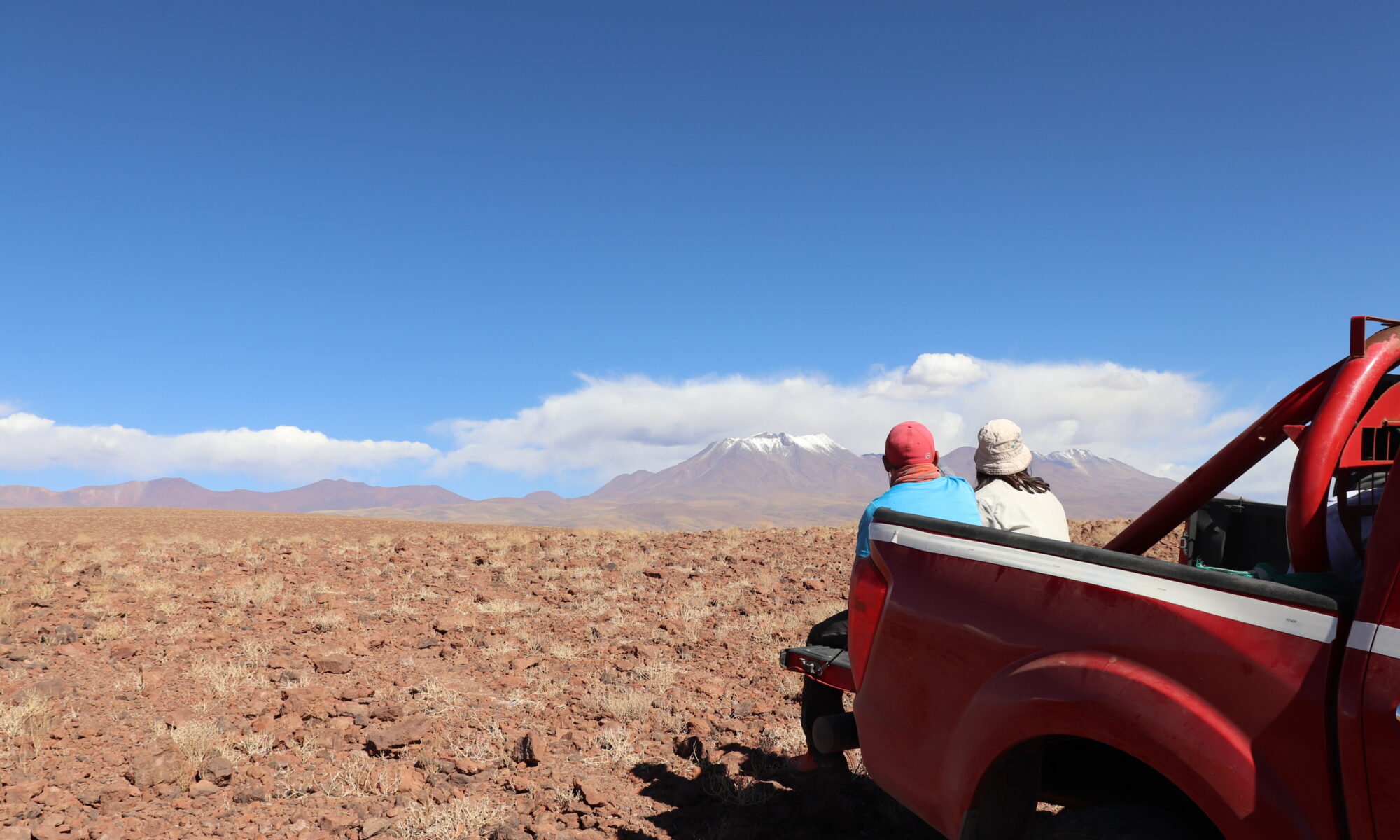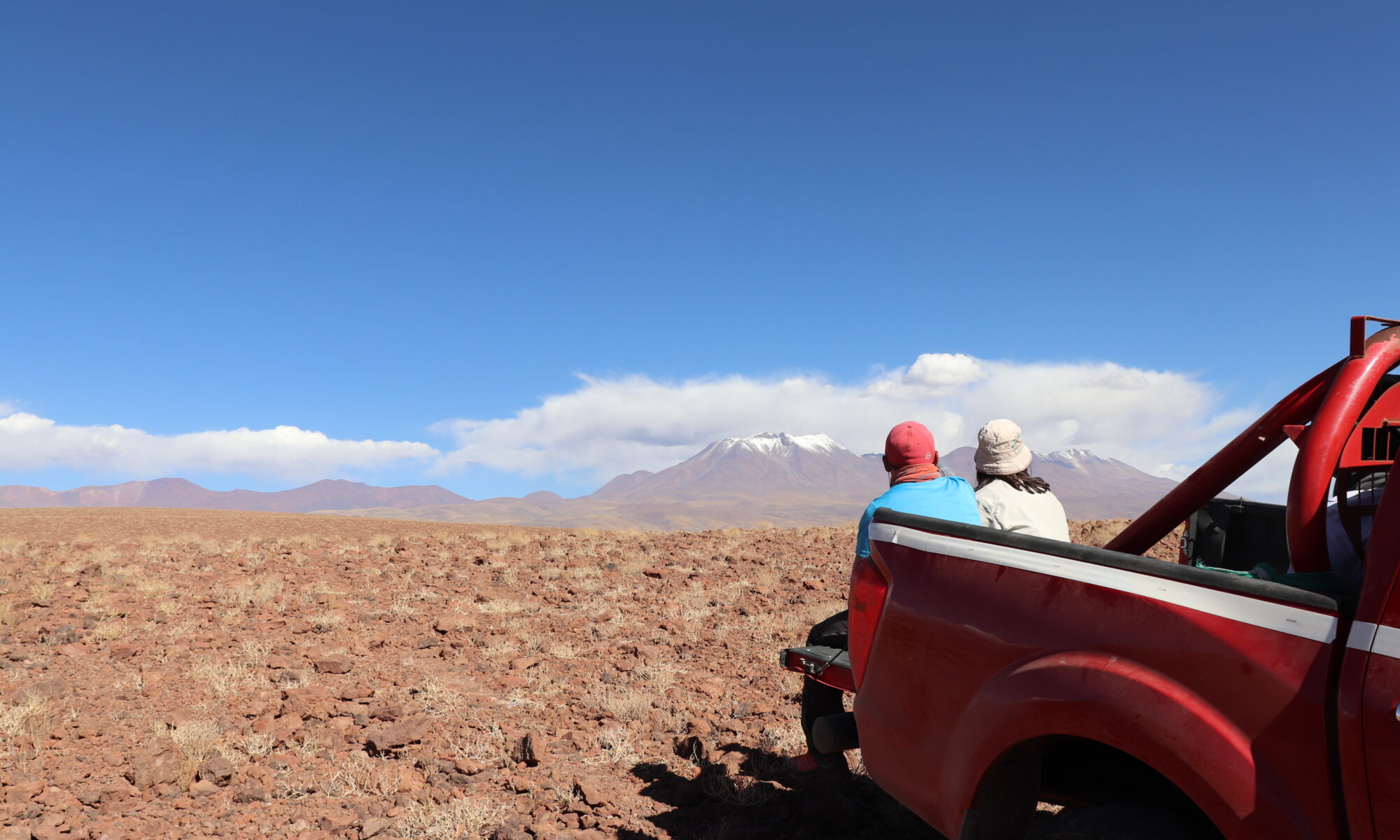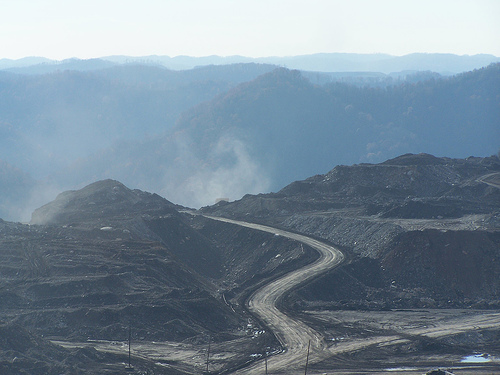Thawing permafrost is known to be a substantial source of greenhouse gases to our atmosphere, yet scientists may still be underestimating this frozen giant. Permafrost soils store twice the amount of carbon than is currently in the atmosphere, but icy temperatures prevent microbes from converting carbon in the soil to greenhouse gasses. This creates a sort of carbon lockbox in the arctic. However, as climate change warms our planet, this once-frozen carbon threatens to escape to the atmosphere as the potent greenhouse gas, methane. A new study by Dr. Katey Walter Anthony and colleagues changes the paradigm of permafrost science and warns that current models underestimate the amount of methane that permafrost thaw in regions of Alaska and Siberia could release.
Continue reading “Permafrost Paradigm Shift Suggests More Methane Emissions to Come”Podemos encontrar microorganismos del mar profundo reposando en tumbas que ellos mismos construyeron
Imagen principal: Alvin – un vehículo de ocupación humana (VOH) sumergible diseñado para permitir la recolección de datos a profundidades hasta 6,500 m por debajo de la superficie del océano. Imágen principal cortesía de John Magyar, Caltech.
Autores: Daniela Osorio-Rodriguez, Kyle S. Metcalfe, Shawn E. McGlynn, Hang Yu, Anne E. Dekas, Mark Ellisman, Tom Deerinck, Ludmilla Aristilde, John P. Grotzinger, and Victoria J. Orphan
Tal vez un fin de semana en tu vida, te encuentres apilado en un vehículo todoterreno a las 6 de la mañana con otros siete estudiantes, registrando intermitentemente el dron de un profesor de geología demasiado entusiasta cuya clase tomaste para llenar un requisito de tu programa. Si es así, en ese vehículo con certeza se pronunció la proclamación “el presente es la clave del pasado”. Un estudio reciente conducido por Daniela Osorio-Rodriguez y colaboradores epitomiza el poder de esas palabras.
Continue reading “Podemos encontrar microorganismos del mar profundo reposando en tumbas que ellos mismos construyeron”Revelando los misterios del magma
La comprensión del comportamiento del magma puede predecir erupciones y revelar paisajes históricos
Por: Ellen Beshuk
Algunas veces el magma fluye en calma; otras veces, explota. La candidata a Ph.D. Ivana Torres-Ewert trata de entender por qué con su máquina de hacer magma en la Universidad de Missouri-Kansas City (UMKC). Sus descubrimientos podrían ayudar a la comunidad a saber a dónde ir cuando un volcán explota y proporcionar un soporte para otras investigaciones sobre volcanes.
Continue reading “Revelando los misterios del magma”Los impactos del calentamiento global en el almacenamiento de carbono en el suelo, la biodiversidad y el rendimiento de los cultivos

Crédito de la imagen: Dominio público (Pexels)
Artículo: La pérdida de carbono orgánico del suelo disminuye la biodiversidad, pero estimula interacciones multitróficas que promueven el metabolismo en el subsuelo.
Autores: Ye Li, Zengming Chen, Cameron Wagg, Michael J. Castellano, Nan Zhang, Weixin Ding.
Pocos problemas son tan urgentes y relevantes para el futuro de nuestra especie como el cambio climático. Cuando consideramos sus devastadores impactos, lo primero en lo que pensamos es en glaciares y osos polares. Sin embargo, una nueva investigación enfoca nuestra atención en organismos mucho más pequeños, los microorganismos, como protagonistas principales en la estabilidad del suelo y la prevención del colapso de la agricultura bajo el calentamiento global.
Continue reading “Los impactos del calentamiento global en el almacenamiento de carbono en el suelo, la biodiversidad y el rendimiento de los cultivos”We may find deep-sea microbes resting in tombs they built themselves
Featured Image: Alvin – a submersible Human Occupancy Vehicle (HOV) designed to allow data collection at depths up to 6,500 m below the ocean surface. Featured image courtesy of John Magyar, Caltech.
Authors: Daniela Osorio-Rodriguez, Kyle S. Metcalfe, Shawn E. McGlynn, Hang Yu, Anne E. Dekas, Mark Ellisman, Tom Deerinck, Ludmilla Aristilde, John P. Grotzinger, and Victoria J. Orphan
Maybe one weekend in your life, you found yourself piling into an SUV at 6 AM with seven other students, intermittently registering the drone of an overenthusiastic geology professor whose course you took to fulfill a degree requirement. If so, in that vehicle, the proclamation that “the present is the key to the past” was certainly uttered. A recent study conducted by Daniela Osorio-Rodriguez and collaborators epitomizes the power of those words.
Continue reading “We may find deep-sea microbes resting in tombs they built themselves”Unlocking Magma’s Mysteries
Understanding magma’s behavior may predict eruptions and reveal historic landscapes
By: Ellen Beshuk
Sometimes magma calmly flows; other times, it explodes. Ph.D. candidate Ivana Torres-Ewert is figuring out why with her magma-making machine at the University of Missouri-Kansas City (UMKC). Her discoveries could help people know where to go when a volcano explodes and provide a foundation for further volcanic research.
Continue reading “Unlocking Magma’s Mysteries”Impacts of global warming on soil carbon storage, biodiversity, and crop yields

Image credit: Public Domain (Pexels)
Paper: Soil organic carbon loss decreases biodiversity but stimulates multitrophic interactions that promote belowground metabolism.
Authors: Ye Li, Zengming Chen, Cameron Wagg, Michael J. Castellano, Nan Zhang, Weixin Ding.
Few issues are as pressing and relevant for the future of our own species as climate change. We may think first about glaciers and polar bears when we consider its devastating impacts. However, new research brings our attention to much smaller organisms, microbes, as major players in stabilizing soils and preventing agriculture from collapsing under global warming.
Continue reading “Impacts of global warming on soil carbon storage, biodiversity, and crop yields”Nuevo soporte para el origen de la vida en fumarolas hidrotermales alcalinas
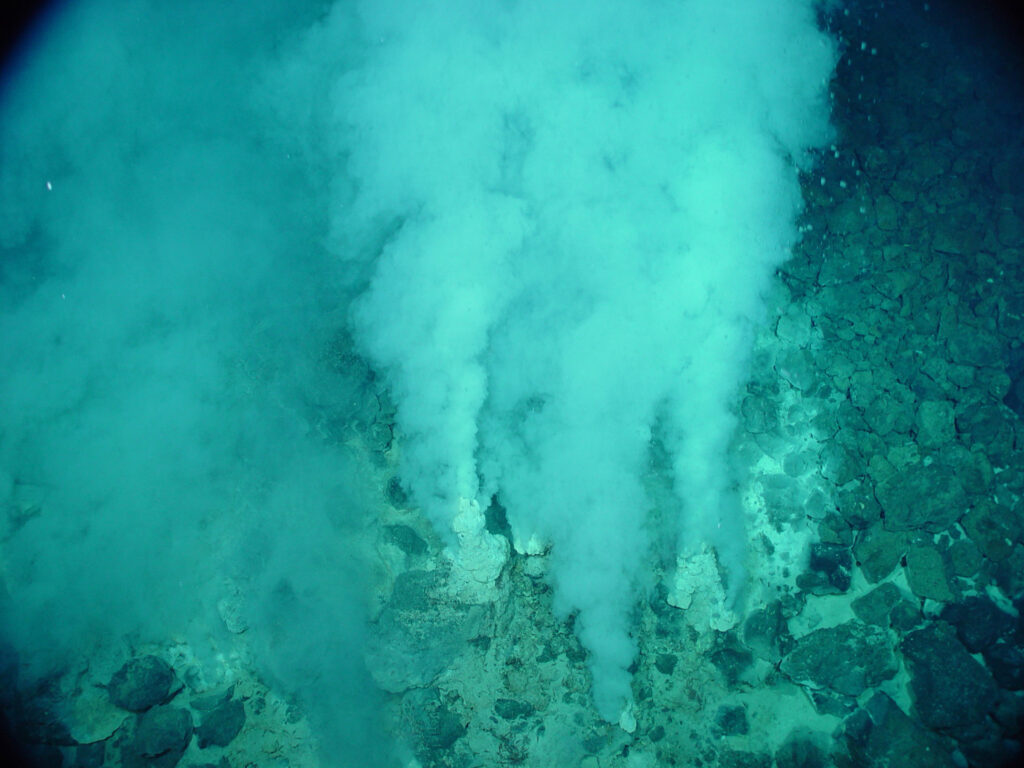
Imagen de la portada: Tapetes blancos floculantes dentro y alrededor de fumarolas blancas extremadamente gaseosas de alta temperatura (>100°C, 212°F) en la Fumarola Champagne. Copyright: CC BY-SA 4.0 a través de wikimedia commons.
Artículo: Chimeneas de óxidos blancos y verdes acumulan ARN en un jardín químico ferruginoso.
Autores: Vanessa Helmbrecht, Maximilian Weingart, Frieder Klein, Dieter Braun, William D. Orsi
Cuando pensamos en mundos extraterrestres, posiblemente evocamos una imágen de vastos oceános con estructuras altas verticales dispersas, como columnas o torres. Al observar imágenes de fumarolas hidrotermales alcalinas, te darás cuenta de que esos mundos extraterrestres no existen solamente en las películas de ciencia ficción. Las fumarolas hidrotermales alcalinas son ambientes marinos profundos abundantes en la Tierra hace más de 4000 millones de años, caracterizados por chimeneas blancas globulares y puntiagudas que se elevan desde el fondo del mar. Ofrecen una combinación de condiciones químicas en las que pueden haber surgido las primeras formas de vida en la Tierra. Sin embargo, las fumarolas hidrotermales alcalinas se han considerado inhóspitas para la formación de ácidos nucleicos, las moléculas que almacenan información en todas las células vivas. Un artículo nuevo de investigadores de LMU Munich reta esta suposición al proporcionar evidencia clave para la estabilización de ácidos nucleicos en fumarolas hidrotermales alcalinas, un descubrimiento que podría hacer estos ambientes los candidatos más adecuados para el origen de la vida en la Tierra.
Continue reading “Nuevo soporte para el origen de la vida en fumarolas hidrotermales alcalinas”New support for the origin of life in alkaline hydrothermal vents
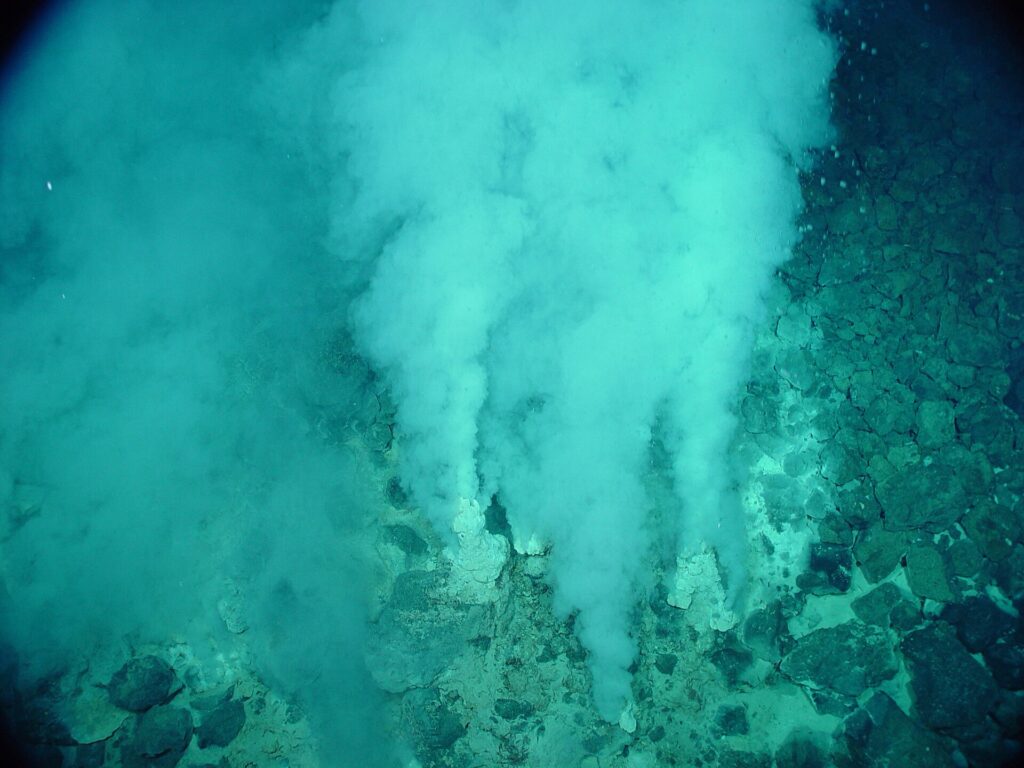
Featured image: White flocculent mats in and around the extremely gassy, high-temperature (>100°C, 212°F) white smokers at Champagne Vent. Copyright: CC BY-SA 4.0 via. wikimedia commons.
Paper: White and green rust chimneys accumulate RNA in a ferruginous chemical garden
Authors: Vanessa Helmbrecht, Maximilian Weingart, Frieder Klein, Dieter Braun, William D. Orsi
When we think of alien worlds, we may evoke an image of vast oceans with tall scattered vertical structures, like columns or towers. By looking at pictures of alkaline hydrothermal vents, you will realize that such alien worlds do not just exist in science fiction movies. Alkaline hydrothermal vents are deep ocean environments widespread on Earth more than 4 billion years ago, in which light globular and spiky chimneys rise from the dark ocean floor. They offer a combination of chemical conditions that may have supported the first forms of life on Earth. However, alkaline hydrothermal vents have been considered inhospitable for the formation of nucleic acids, the information-storage molecules present in all living cells. A new paper from researchers at LMU Munich challenges this assumption by providing critical evidence for the stabilization of nucleic acids in alkaline hydrothermal vents, a discovery that would make these environments the most suitable candidates for the origin of life on Earth.
Continue reading “New support for the origin of life in alkaline hydrothermal vents”Making Mountains Out of Molehills? Long-Term Geomorphic Surface Impacts of Mountaintop Removal Mining
Featured Image: Mountaintop removal mining site in Appalachia. Copyright: CC BY-SA 4.0 via. wikimedia commons.
Report: Peripheral gully and landslide erosion on an extreme anthropogenic landscape produced by mountaintop removal coal mining (2020)
Authors: Miles Reed & Dr. Steve Kite
There’s a general consensus that coal mining is ‘bad’ for the environment, but beyond carbon emissions, what is its visible, physical impact on our surroundings? What lasting damage does mining create on the Earth’s surface? The answer is that it has a tremendous impact; specifically, mining in Appalachia is linked to distorting the natural flow of water on the landscape, which creates ripple (no pun intended) effects on the greater environment. A recent study by Reed and Kite details those effects on Appalachian landscapes, directly linking mountaintop mining to erosion and landslides. Now, as worries about access to safe, clean water being jeopardized by fossil fuel production abound nationwide, exploring the impacts of mountaintop mining on Appalachian freshwater becomes incredibly important with immediate and personal impacts.
Continue reading “Making Mountains Out of Molehills? Long-Term Geomorphic Surface Impacts of Mountaintop Removal Mining”